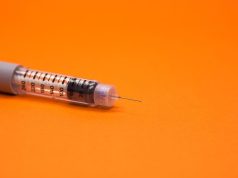Factors linked to rebound growth include age of discontinuation, deep IH, and female gender
FRIDAY, March 11, 2016 (HealthDay News) — About 25 percent of patients with infantile hemangioma (IH) have rebound growth, according to a study published online March 7 in Pediatrics.
Sonal D. Shah, M.D., from the University of California at San Francisco, and colleagues conducted a multicenter retrospective cohort study involving propranolol-treated patients with IHs. They obtained patient demographic characteristics, IH characteristics, and specifics of propranolol therapy for 912 patients.
The researchers found that 25.3 percent of patients had rebound growth, with initial rebound occurring at a mean age of 17.1 months. Compared with those who discontinued therapy at 12 to 15 months, the odds of rebound were increased among those who discontinued therapy at younger than 9 months (odds ratio, 2.4). In univariate analysis, female gender, location on head and neck, segmental pattern, and deep or mixed skin involvement correlated with rebound. Only deep IHs and female gender were significantly associated with rebound on multivariate analysis (odds ratios, 3.3 and 1.7, respectively). Eighty-three percent of those with rebound growth required therapeutic modification, including 62 percent of patients with modification in their propranolol therapy.
“Predictive factors for rebound growth included age of discontinuation, deep IH component, and female gender,” the authors write. “Patients with these predictive factors may require a prolonged course of therapy.”
Two authors disclosed financial ties to Pierre Fabre Dermatology.
Copyright © 2016 HealthDay. All rights reserved.








